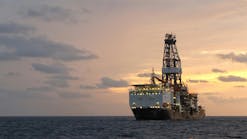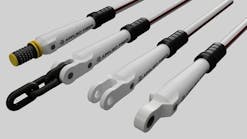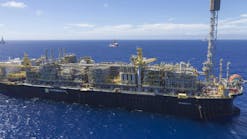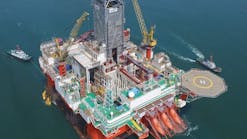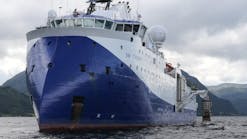View Article as Single page
A novel approach
In the Greater Plutonio project in Angola, CSI packers provided continuous and reliable high-pressure seals in several sand-control completion wells after years of high-rate water injection. Each of the five fields has multiple, stacked, unconsolidated sands separated by continuous shale sections ranging from 82 to 492 ft (25 to 150 m).
In this case, the operator needed a novel zonal isolation system that could be deployed quickly in highly irregular open holes with large internal diameters, up to 9.25 in., and still provides long-term, high-pressure seals. A technical capability that at the time had yet to be proven. The design called for the implementation of DHFC for better control of water-injection conformance and potential reduction in well count. The dual-cup system designed with a sliding movement joint and open-hole packer slips was selected, followed by more than two years of further design and testing.
In the first-ever deployment in 2007, the CSI system provided flexibility in sealing the geometrically irregular wellbores. Use of the rock anchor reduced axial loads on the sealing element caused by significant temperature and pressure differential swings that are common in the deepwater environment. It supported the loads generated by the differential pressure across the elements and the axial loads in the lower completion assembly. The ongoing exposure of the CSI packers to various cyclical loadings is monitored by downhole pressure and temperature gauges installed in the upper and lower zones, with each zone monitored separately.
Installation of the CSI packer facilitated installation of reliable DHFC water injection wells in the challenging environment, an operation that likely would not have been possible using conventional open-hole packer technology.
Single-trip gravel packs
An important advantage of the CSI technology is its ability to perform single-trip, multi-zone, open-hole gravel packs, a capability that operators have long sought to achieve. In the past, multi-zone gravel packs had to run in multiple trips, and were not possible in the open hole. At up to $1 million per trip and one trip per zone, such completions can become expensive.
The TerraForm portfolio includes a packer design that can be set prior to pumping gravel. The slurry is allowed to flow underneath the elements down to the next zone using shunt tube technology. The tool includes two unidirectional cup-seal packer assemblies coupled with an internal shunt annulus running the length of the packer. The internal shunt annulus communicates with a shunted screen to provide continuous communication across multiple zones during packing. A valve is provided to ensure the shunt annulus under the packer is closed.
With the cup seals providing reliable zonal isolation, gravel can be pumped on either side of the tool. After the packers are set, the operator can land on top of the completion, gravel pack multiple zones and pull out of the hole in a single-trip, without excessive service tool manipulation, saving millions of dollars. The shunt tube packer has run on multiple operations globally.
The TerraForm packer portfolio is further enhanced by the ability to deploy it in an intervention-less fashion. One option is the use of radio frequency identification devices (RFID) pumped downhole. Alternatively, pressure sequences from the surface can be used to initiate setting, or delayed timers are available to set the packer at a specified time. In the unlikely event any of the interventions-less options do not set the packer, conventional methods may be used as a contingency.
Deepwater and ultra-deepwater reservoirs hold tremendous promise for hydrocarbon recovery, but only with tools and technologies that deliver long-term functionality and are cost-effective and efficient. As open-hole completions increasingly become the method of choice for offshore operators, innovative packer designs that go beyond the capabilities of conventional systems are essential for optimizing life-of-well reliability and field economics.
